
How to Use UCSC Nucleo I/O Shield: Examples, Pinouts, and Specs
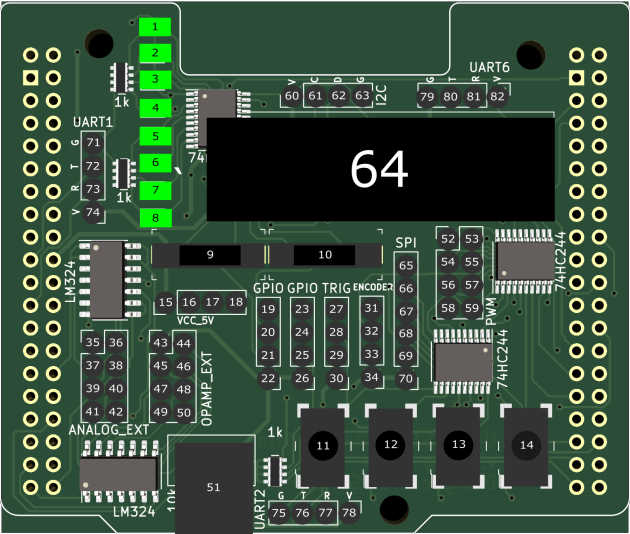
 Design with UCSC Nucleo I/O Shield in Cirkit Designer
Design with UCSC Nucleo I/O Shield in Cirkit DesignerIntroduction
The UCSC Nucleo I/O Shield is a versatile expansion board designed to enhance the functionality of the Nucleo development platform. It provides additional input/output capabilities, including a variety of connectors and interfaces for sensors, actuators, and other peripherals. This shield simplifies prototyping and development by offering a plug-and-play solution for extending the Nucleo board's capabilities.
Explore Projects Built with UCSC Nucleo I/O Shield
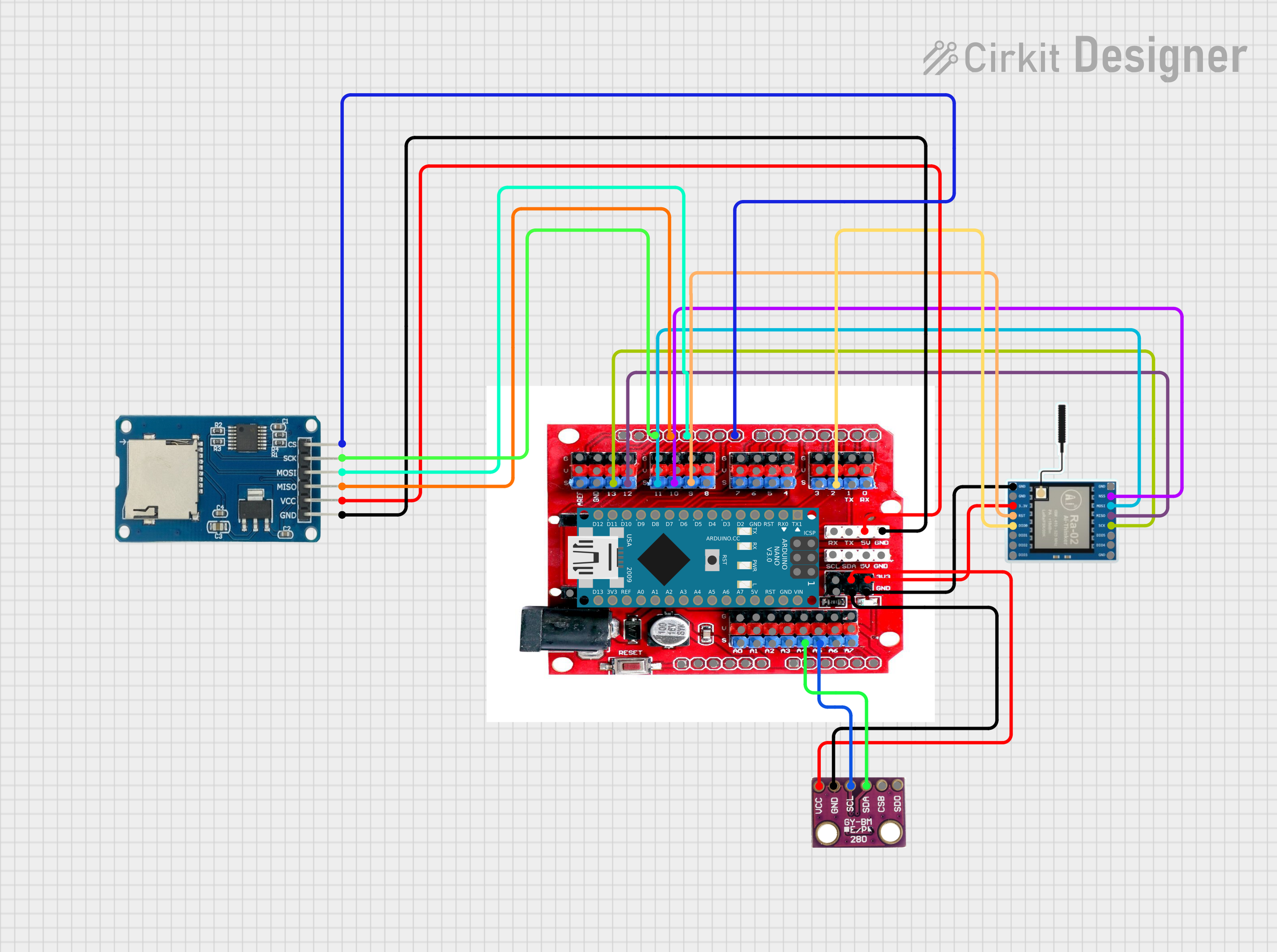
 Open Project in Cirkit Designer
Open Project in Cirkit Designer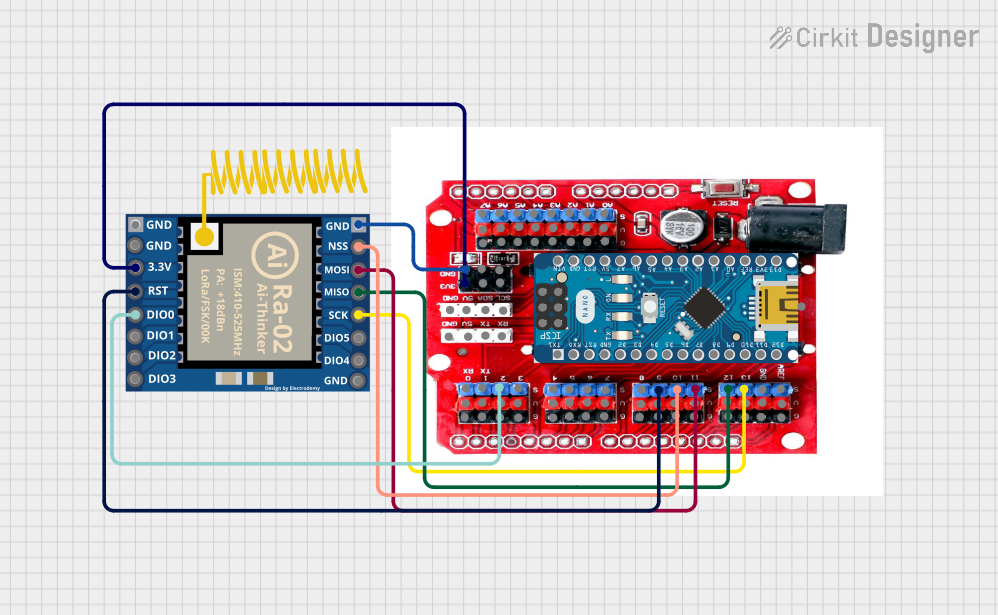
 Open Project in Cirkit Designer
Open Project in Cirkit Designer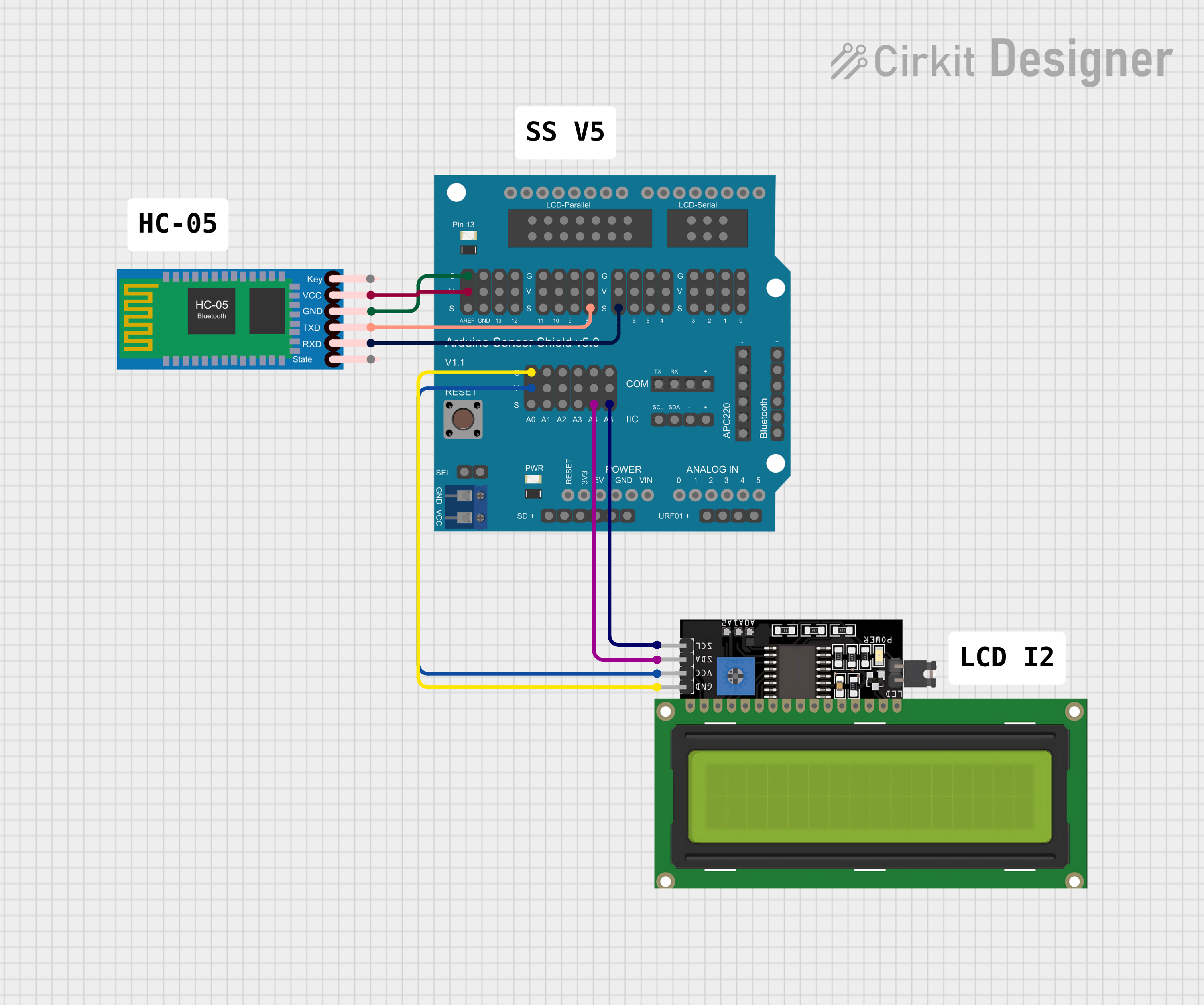
 Open Project in Cirkit Designer
Open Project in Cirkit Designer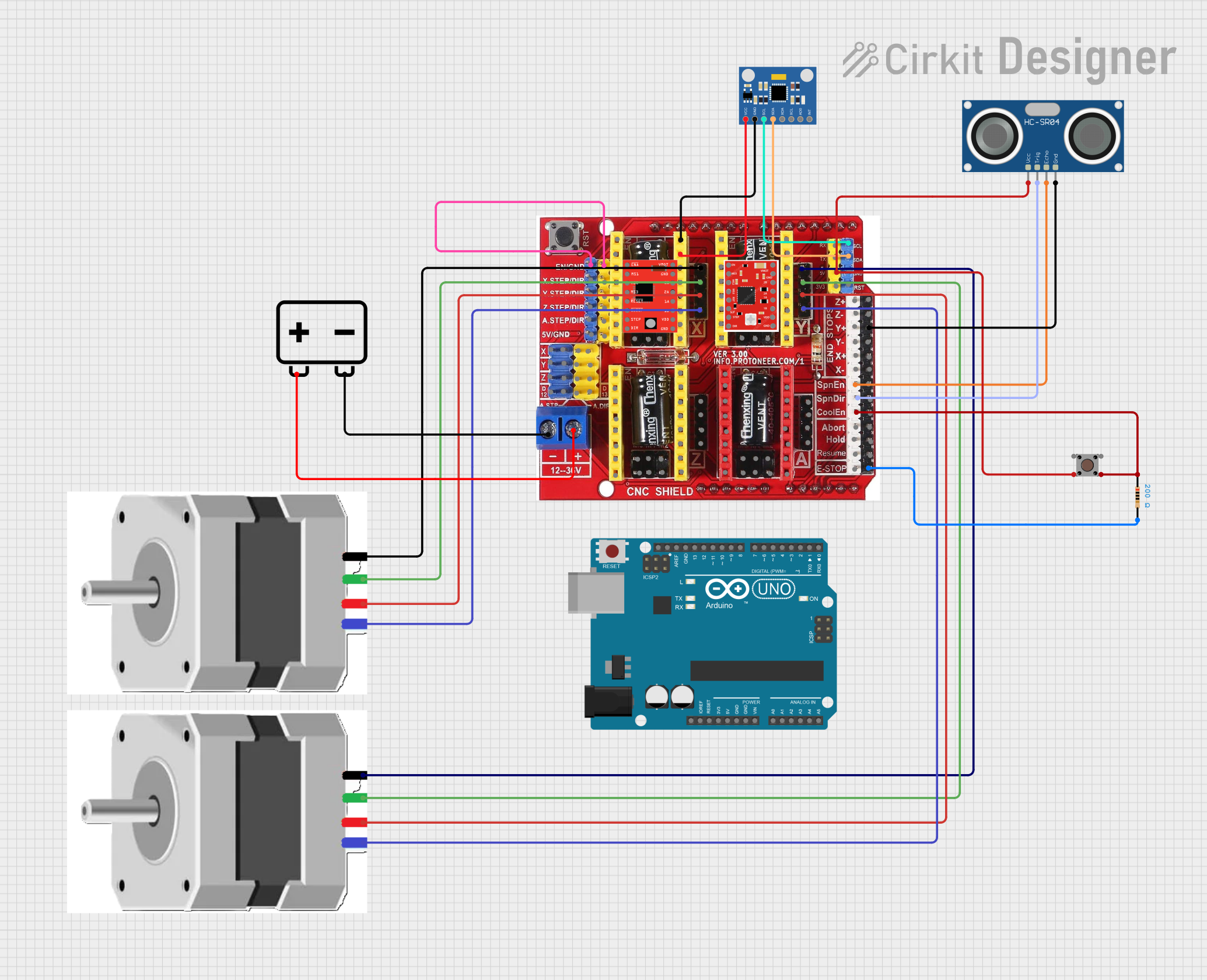
 Open Project in Cirkit Designer
Open Project in Cirkit DesignerExplore Projects Built with UCSC Nucleo I/O Shield

 Open Project in Cirkit Designer
Open Project in Cirkit Designer
 Open Project in Cirkit Designer
Open Project in Cirkit Designer
 Open Project in Cirkit Designer
Open Project in Cirkit Designer
 Open Project in Cirkit Designer
Open Project in Cirkit DesignerCommon Applications and Use Cases
- Prototyping IoT devices with multiple sensors and actuators
- Robotics projects requiring motor drivers and sensor integration
- Educational projects for learning embedded systems
- Rapid development of industrial control systems
- Home automation and smart device prototyping
Technical Specifications
Key Technical Details
- Input Voltage: 3.3V or 5V (compatible with Nucleo board power supply)
- Interfaces:
- I2C, SPI, UART
- Analog and digital I/O
- Connectors:
- Grove connectors for sensors and actuators
- Standard headers for GPIO access
- Servo motor connectors
- Dimensions: Matches the Nucleo board form factor
- Compatibility: Supports all Nucleo development boards with Arduino-compatible headers
Pin Configuration and Descriptions
The UCSC Nucleo I/O Shield provides access to the following pins and connectors:
| Pin/Connector | Description |
|---|---|
| I2C (SCL, SDA) | I2C communication pins for connecting sensors and peripherals |
| SPI (MOSI, MISO, SCK, CS) | SPI communication pins for high-speed data transfer with external devices |
| UART (TX, RX) | UART communication pins for serial communication |
| Analog Pins (A0-A5) | Analog input pins for reading sensor data |
| Digital Pins (D0-D13) | Digital I/O pins for controlling actuators or reading digital sensors |
| Grove Connectors | Plug-and-play connectors for Grove-compatible modules |
| Servo Connectors | Dedicated connectors for driving servo motors |
| Power Pins (3.3V, 5V, GND) | Power supply pins for external modules and peripherals |
Usage Instructions
How to Use the Component in a Circuit
- Attach the Shield: Plug the UCSC Nucleo I/O Shield onto the Nucleo development board, ensuring proper alignment of the headers.
- Connect Peripherals: Use the Grove connectors, servo connectors, or GPIO headers to attach sensors, actuators, or other peripherals.
- Power the System: Power the Nucleo board via USB or an external power source. The shield will draw power from the Nucleo board.
- Program the Nucleo Board: Write and upload your code to the Nucleo board using an IDE like STM32CubeIDE or Arduino IDE (if supported).
Important Considerations and Best Practices
- Voltage Compatibility: Ensure that the connected peripherals are compatible with the shield's voltage levels (3.3V or 5V).
- Pin Conflicts: Avoid using the same pins for multiple peripherals to prevent conflicts.
- Current Limits: Do not exceed the current limits of the Nucleo board and shield when powering external devices.
- Secure Connections: Ensure all connectors and headers are securely attached to avoid intermittent connections.
Example Code for Arduino-Compatible Nucleo Boards
The following example demonstrates how to use the I2C interface to read data from a temperature sensor connected to the shield.
#include <Wire.h> // Include the Wire library for I2C communication
#define TEMP_SENSOR_ADDR 0x48 // I2C address of the temperature sensor
void setup() {
Wire.begin(); // Initialize I2C communication
Serial.begin(9600); // Start serial communication for debugging
Serial.println("UCSC Nucleo I/O Shield - Temperature Sensor Example");
}
void loop() {
Wire.beginTransmission(TEMP_SENSOR_ADDR); // Start communication with the sensor
Wire.write(0x00); // Request temperature data (register 0x00)
Wire.endTransmission();
Wire.requestFrom(TEMP_SENSOR_ADDR, 2); // Request 2 bytes of data from the sensor
if (Wire.available() == 2) { // Check if 2 bytes are available
int tempData = Wire.read() << 8 | Wire.read(); // Combine the two bytes
float temperature = tempData * 0.0625; // Convert to temperature in Celsius
Serial.print("Temperature: ");
Serial.print(temperature);
Serial.println(" °C");
} else {
Serial.println("Error: No data received from sensor");
}
delay(1000); // Wait 1 second before the next reading
}
Troubleshooting and FAQs
Common Issues and Solutions
Shield Not Detected by Nucleo Board:
- Ensure the shield is properly aligned and securely attached to the Nucleo board.
- Verify that the Nucleo board is powered on and functioning correctly.
Peripherals Not Responding:
- Check the wiring and connections to the shield.
- Confirm that the peripheral's voltage and current requirements are within the shield's limits.
- Verify that the correct pins and communication protocols are used in the code.
I2C/SPI Communication Fails:
- Ensure the correct I2C address or SPI settings (e.g., clock speed) are used in the code.
- Check for conflicting devices on the same bus.
Servo Motors Not Moving:
- Verify that the servo motor is connected to the correct servo connector.
- Ensure the power supply can handle the current requirements of the servo motor.
FAQs
Q: Can I use the UCSC Nucleo I/O Shield with non-Nucleo boards?
A: The shield is designed for Nucleo boards with Arduino-compatible headers. It may work with other boards that have the same header layout, but compatibility is not guaranteed.
Q: How many Grove modules can I connect simultaneously?
A: The shield provides multiple Grove connectors, but the exact number of modules depends on the available GPIO pins and communication buses.
Q: Is the shield compatible with 5V sensors?
A: Yes, the shield supports both 3.3V and 5V peripherals. Ensure the correct voltage is selected for your application.
Q: Can I stack multiple shields on a single Nucleo board?
A: Stacking is possible if there are no pin conflicts between the shields. Check the pin usage of each shield before stacking.